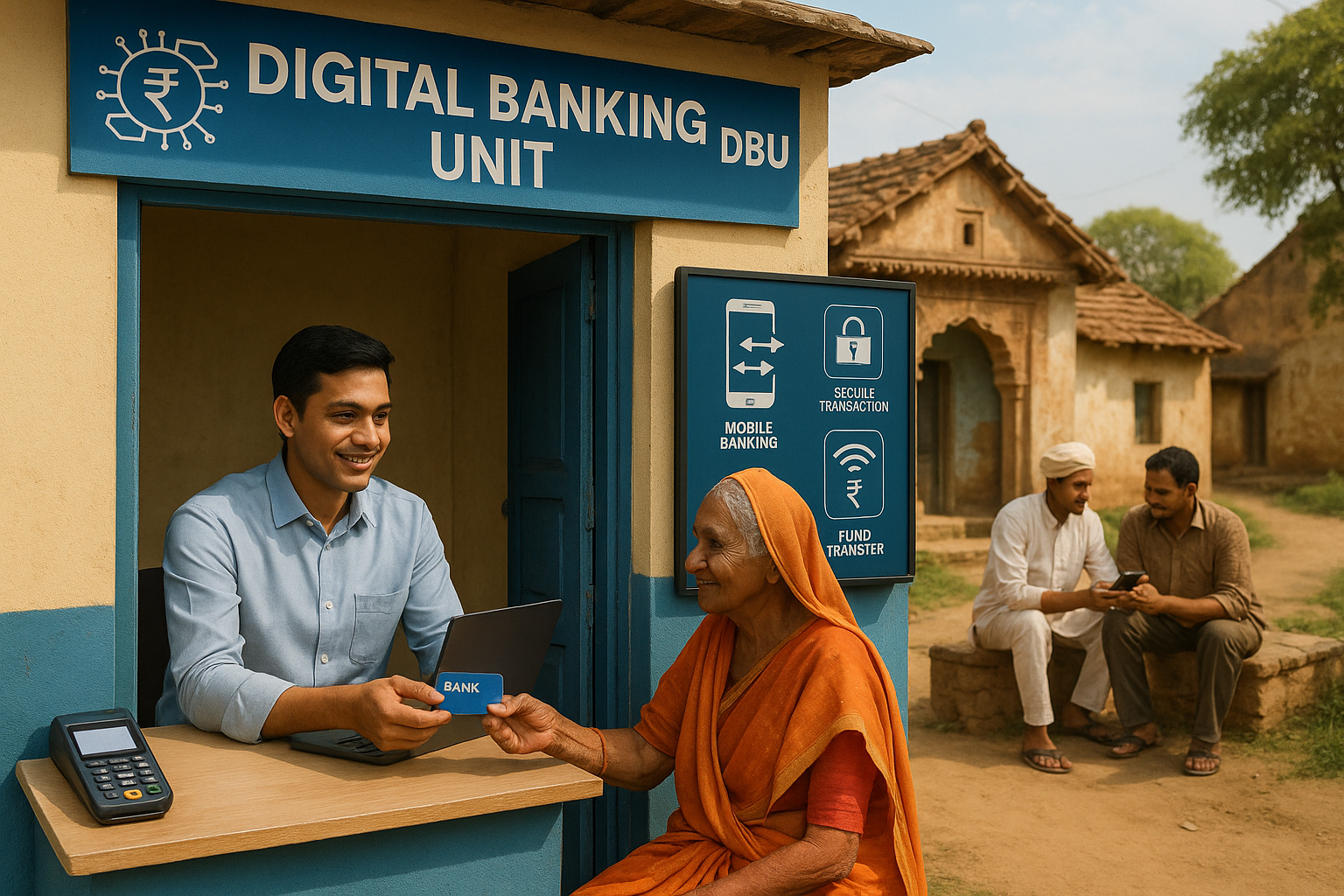“Why India’s Digital Banking Units Are Struggling: Challenges and Lessons for Financial Inclusion”
Digital Banking Units in India: A Well-Intentioned Initiative Struggling to Gain Traction
India’s ambitious Digital Banking Unit (DBU) initiative, launched three years ago to bridge the financial gap for unbanked and underbanked populations, has failed to gain meaningful traction according to recent reports. Despite the initial rollout of 75 units, banks have added just 25 more DBUs in the past three years, bringing the total to only 100 units serving a population of 1.4 billion people.
According to a May 2025 report in Financial Express, banking officials have grown increasingly skeptical about the future of DBUs, with one banker bluntly describing the initiative as “just a box-ticking exercise.” This sentiment reflects broader concerns about the program’s effectiveness and relevance in India’s rapidly evolving financial landscape.
DBUs Overshadowed by Business Correspondents
A significant factor hampering DBU adoption has been the proliferation of Business Correspondents (BCs) across India. With approximately 1.35 million BCs now operating throughout the country, these representatives bring banking services directly to customers’ doorsteps, including account opening, loans, and investment products. This convenience has severely diminished the incentive for customers to visit physical DBU locations.
“BCs have made DBUs redundant,” explained one banker interviewed for the Financial Express report. “When banking is on your doorstep, why visit a banking kiosk?” This doorstep service model has proven particularly effective in rural and semi-urban areas where traveling to a DBU location might require significant time and resources.
Challenges Facing DBU Implementation
While the concept of Digital Banking Units appeared promising on paper, banking officials point to several key challenges preventing successful real-world implementation:
1. Lack of customer awareness: Many potential users remain unaware of DBU services and locations, limiting organic adoption.
2. Low financial literacy: Particularly in rural and semi-urban India, limited understanding of digital financial services creates barriers to DBU utilization.
3. High operational expenditure: The costs associated with maintaining physical locations, technology infrastructure, and staffing have raised questions about the financial viability of the DBU model.
4. Proliferation of mobile banking: As smartphones become increasingly ubiquitous, many customers prefer using mobile banking applications that offer services without requiring a visit to any physical location.
“Customer acceptance is crucial for DBUs’ success, but it’s just not happening,” noted one banker in the Financial Express report, highlighting the fundamental adoption challenge facing the initiative.
Regulatory Prioritization
While India’s financial regulators have broadly emphasized digital transformation in banking, DBUs appear to have fallen down the priority list. In December 2024, the Reserve Bank of India introduced new regulations expanding digital banking services, yet the specific DBU initiative received little attention.
“Financial inclusion requires a tailored approach,” explained one industry source. “We’ve added over half a billion bank accounts via the Jan Dhan scheme, but there’s still work to be done.” This suggests that regulators and financial institutions may be focusing their financial inclusion efforts on channels that have demonstrated greater effectiveness than DBUs.
Financial Viability Concerns
The costs associated with DBU implementation—including infrastructure, technology, and personnel—have raised questions about the initiative’s sustainability. However, banking officials emphasize that cost alone isn’t the primary concern.
“It’s not about the cost, it’s about customer acceptance and relevance,” one banker stated. This suggests that even with adequate funding, DBUs would still face fundamental challenges in attracting and retaining users in a competitive financial services landscape.
Digital Banking Maturity in India
The struggles of physical DBUs stand in contrast to broader digital banking advancements in India. According to Deloitte’s Digital Banking Maturity survey, Indian banks have been focusing on expanding customer relationships and enhancing services beyond traditional banking, resulting in measurable improvements in digital banking maturity scores.
Indian banks are particularly focused on ecosystem development, Account Aggregation implementation, and improving user experience across digital channels. This suggests that while physical DBUs may be struggling, digital banking as a whole continues to advance rapidly in India.
Potential Path Forward
Despite current challenges, opportunities remain for reimagining the DBU concept. With insurance and mutual fund penetration below 5% in India, there are significant untapped markets for financial services that properly positioned DBUs could potentially address.
Banking experts suggest that integrating digital services more seamlessly with existing branch networks and BC frameworks could create a more cohesive customer experience while advancing financial inclusion goals. “DBUs need to be more than just a physical presence,” noted one banker. “They need to offer something unique and valuable to customers.”
Implications for U.S. Credit Unions
For U.S. credit union executives, India’s DBU experience offers valuable lessons about the challenges of implementing physical-digital hybrid models in financial inclusion initiatives. The most notable takeaway may be that convenience and accessibility remain paramount for customers, regardless of market.
The success of India’s BC model—bringing services directly to customers—parallels the increasing emphasis on personalized service and community engagement that many U.S. credit unions already prioritize. As credit unions continue refining their digital transformation strategies, maintaining this human connection while expanding digital capabilities will likely remain essential.
As financial services continue evolving globally, the DBU experience demonstrates that even well-intentioned initiatives must continuously adapt to changing customer preferences and technological capabilities. Whether through innovative service offerings or strategic partnerships, financial institutions must remain agile in their approach to serving underbanked populations.


